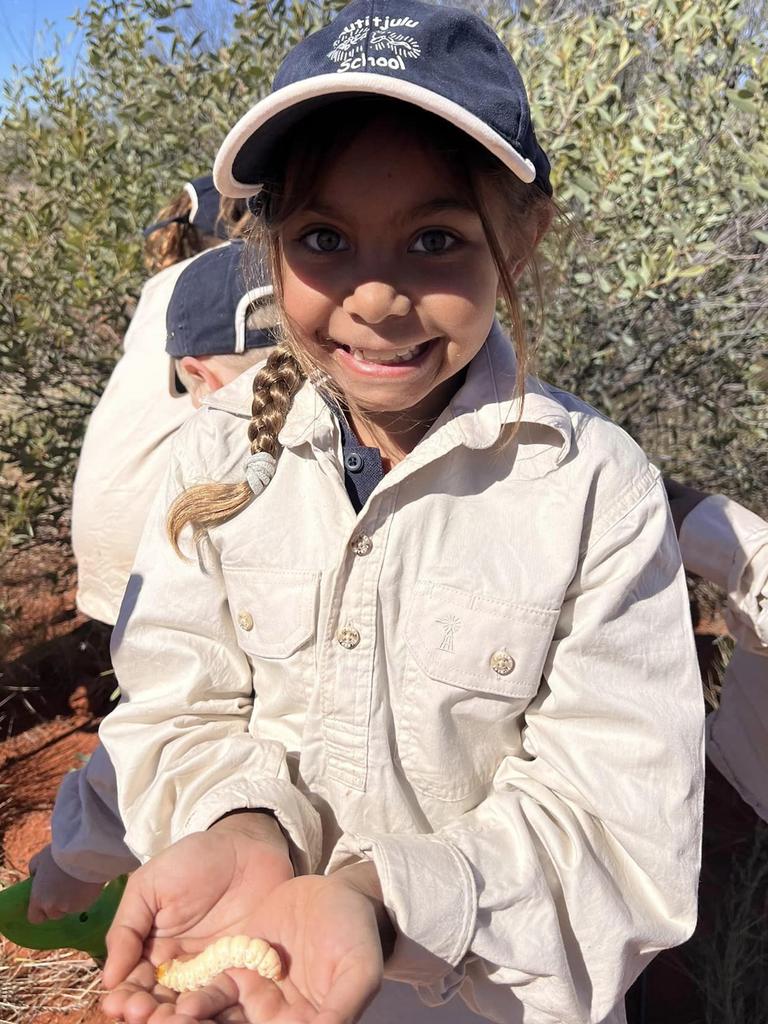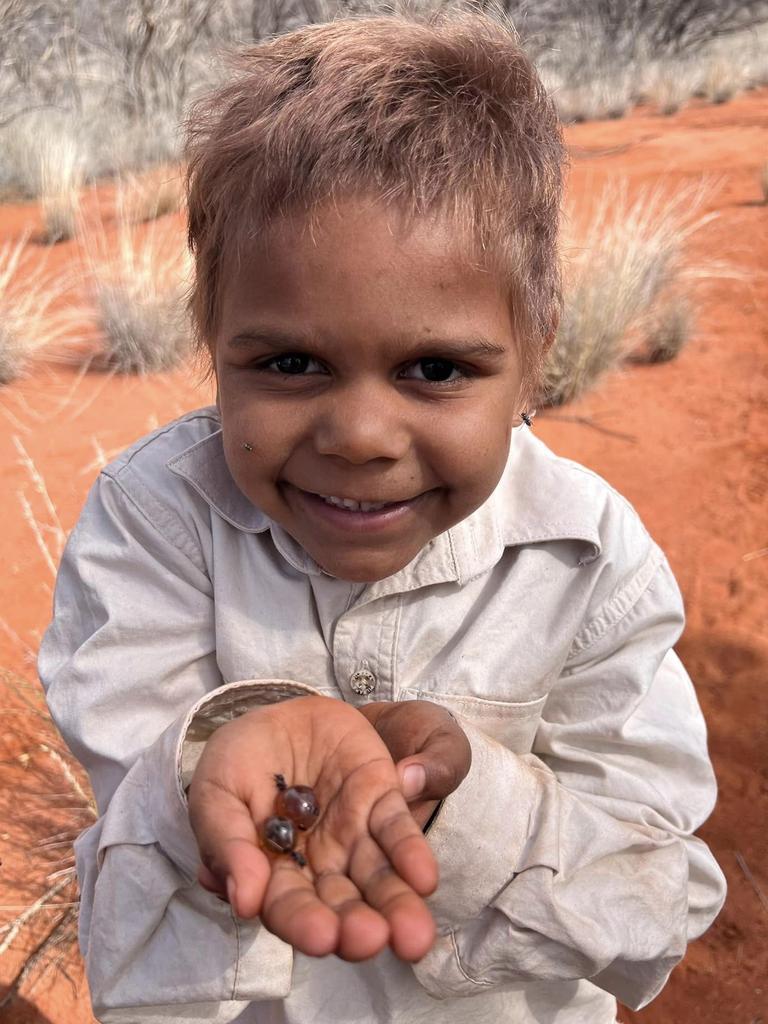Mutitjulu School students learn on country with Central Land Council
Just outside one of the Northern Territory’s most beautiful national parks, a class of students traded whiteboards for red dirt to keep their connection to country strong

READING LEVEL: GREEN
Students traded whiteboards for red dirt during an outback excursion to learn how to track the Northern Territory’s native wildlife.
Mutitjulu School partnered with the Central Land Council to teach kids how to track tjakura (desert skinks) and collect and cook maku (witchetty grub) and tjala (honey ants).
Mutitjulu School principal Trish Noy said the students, dressed in their finest ranger uniforms, were all engaged and proud of the new skills the CLC Tjakura Rangers taught them.


Ms Noy said the students had been developing a partnership with the rangers – who have “really enhanced” the school’s Indigenous Language and Culture program – for about a year.
“I think it’s important for all students to learn on country, not just in the Red Centre,” she said.
“Having student learning directed by our Anangu families helps to keep the connection strong between school, families and our ranger groups.
“It provides a sense of ownership of the school and students always love going out bush and sharing their learning with others.”
The school is 480km southwest of Alice Springs, inside the Uluru Kata Tjuta National Park.
Ms Noy said the Tjakura Rangers led excursions outside the park’s borders, but the school also had strong connections with the national park’s ranger teams.
With on-country learning opportunities available from both sides of the border, she said students got to “experience the best of both worlds”.

Central Land Council General Manager Mischa Cartwright said it was important to educate children about tracking threatened species like the tjakura because the elusive animals were culturally significant to Anangu people.
“The rangers also taught the students about threats to the tjakura, such as wild cats and dingoes,” she said.
“The rangers and minymas (women) showed the students how to dig for maku and also showed them different animal tracks, such as bush turkey, cat, and dingo.
“These experiences are important for ‘Mantaku atunymananyi’ (looking after country) and contribute to ‘Ngapartji-ngapartji nintiringanyi’ (two-way education and training).”

